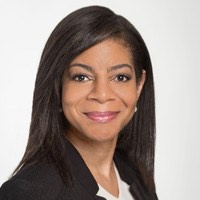4 minutes
Internally grown framework gets regularly refined
$1 billion USF Federal Credit Union in Tampa, Florida, has taken a novel approach to collaboration by developing a unique, best-in-class practice for strategic planning. Rick Will, Ph.D., professor emeritus at the University of South Florida Muma College of Business and chair of the board, first developed the CU’s practice in 2013 and has been refining it ever since.
The process begins by asking all volunteers, via questionnaire, for input on the current credit union’s mission, vision, values and core competencies. The survey asks each volunteer for input on the traditional questions about strengths, weaknesses, opportunities and threats to the organization as well as about what they see as critical success factors. These questions include ones like “What does success looks like to our credit union?” and “What strategies are essential in achieving success for the credit union?”
Once each volunteer has answered the survey questions, Will and another volunteer conduct interviews for clarification and confirm the validity of the information with each volunteer. Will then creates a Harvard-style case study including the summarized volunteer input and additional information for discussion and distributes the document to all volunteers.
“I create a discussion case that has materials mostly from NCUA (the National Credit Union Administration); the latest information from NAFCU (the National Association of Federally-Insured Credit Unions), which has a comparative analysis about credit unions our size or in our region; and the latest economic update from CUNA (the Credit Union National Association),” says the CUES member. I make sure that the volunteers have all of that information. And then I ask them to review the mission, vision, values and core competencies.”
Will then conducts a volunteer-only planning session to jointly establish suggested strategic directives for the credit union. Once the volunteer session is completed, Will meets with the CEO and senior leadership team to report the volunteer-validated summary and strategic directions in which they are interested in seeing the credit union move.
“And the cool thing about it is that we’ve discussed everything first,” Will says. “We present a joint set of ideas to management so that we’re not going into the strategic planning section with different voices.”
Next Steps
“Last year, we added a new step because we’re always in a continuous learning and improvement model at the credit union,” says Rick Skaggs, president/CEO and a CUES member. Skaggs says that now after he meets with Will, Will meets with the senior leadership to answer any questions they may have.
“I thought this was really helpful because my vice presidents were asking questions that I wouldn’t have been able to answer because I wasn’t in those sessions,” Skaggs says.
Skaggs says that management takes the feedback from the volunteers and begins doing their work. He adds that this enables them to have a very collaborative strategic planning session. They work for six to eight weeks before returning with their ideas. In a joint session, management and the board finalize the strategic plan.
“I love this because I’ve worked under other models where it didn’t work as smoothly as this,” Skaggs says. “When we get into the strategic planning, we see great alignment, and I don’t think that’s always common. That alignment is fantastic. And it just allows you to build your strategy map and really come out of a strategic planning process aligned and ready to go with the new initiatives and the new directions, if there are any, for that year. It’s really a process that flows very well.”
Coming to Agreement
“By the end of the joint session, we should have a pretty good agreement on what we’re going to do or not going to do for at least the next year,” says Will. As of the last session, he says that they are currently looking at the three- to five-year timeframe, which they hadn’t done before.
“I think that’s where we meld,” Will says. “We really do come to an agreement. And if we don’t, we’re going to figure out why and we’re going to revisit it.
“It’s a lot of work, but I think it’s in the credit union’s best interest,” Will says. “If we can help the credit union, we’re helping our membership.”
Formerly a member of the CUES marketing staff, Felicia Hudson Hannafan is a writer based in Chicago.






